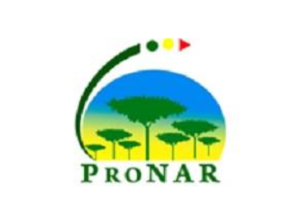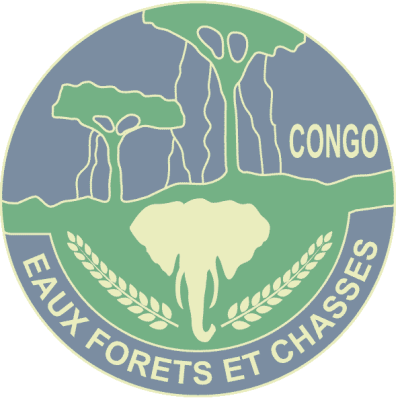Ja.Ca.Mbé
Fighting climate change, empowering local communities
The Project
The Ja.Ca.Mbé Initiative is a transformative afforestation and reforestation project, by Renco Green, in the heart of The Republic of Congo, created with the aim of mitigating the impacts of climate change, through the generation of Carbon Credit, while uplifting the local community in the region.
Our commitment
Afforest areas of degraded savannah, reforest and preserve forest patches already present in the area while enhancing the social, environmental, and economic well-being of the local community for the next 30 years.
Ja.Ca.Mbé is operated by Renco Green, which holds a 30-year concession from the Congolese Government to manage 40,000 hectares of local land. The project aligns with the ProNAR program, supported by the Ministry of Forestry Affairs.
Land Development
40,000 hectares of degraded Savannah land to be covered by Acacia Mangium.
Carbon Credit
Certified carbon credits will be produced throughout the lifecycle of this project.
Community Support
The project is committed to supporting local community members across social, environmental and economic dimensions.

A groundbreaking initiative striving to create a positive environmental and social impact.
Our commitment
Land Development
Ja.Ca.Mbé has its focal point in Mbé, a village located in the Ngabe District of The Republic of Congo. Mbé holds particular significance for this project as it is positioned on the Batéké Plateau, an area proven to be highly favourable for forestation initiatives. The land will be developed in key stages year-on-year through the reforestation of currently degraded savannah areas and the strengthening of the existing environment through the conservation of forest plots.
See the yearly afforestation and reforestation progress stages.
Our commitment
The local Community
The local communities play a pivotal role in Ja.Ca.Mbé, actively contributing to its ongoing development. As a part of this project, we are committed to helping foster and uplift local communities by finding innovative ways in which to support them across keys areas of health, education and infrastructure.
The Project has committed to performing and respecting the ‘Cahier de charge’, officially signed with local communities, to engage in social works every year of the Project’s activity until 2034. These efforts are focused on the rehabilitation of infrastructure in villages. This includes engaging with the local school system, and the health system, as well as improving access to electricity and access to water.
Our commitment on community support
Our impact
Our efforts to invest in education and empower future generations start with supplying schools with much-needed educational materials, ensuring that students have the tools they need to succeed. Furthermore, we undertake renovation projects to improve some school infrastructures, creating safe and conducive learning environments. By supporting education, we aim to unlock opportunities and foster the growth and development of young minds within the community.
Our commitment to improving healthcare access and facilities in the local community is aimed at promoting better health outcomes and well-being for all members of the community. We provide essential pharmaceutical supplies to some local health centres within the Project area, ensuring that residents have access to quality medical care. Additionally, we undertake renovation projects to enhance the infrastructure and capacity of healthcare facilities.
By investing in infrastructure, we aim to create a more resilient and vibrant community for all residents. The access to water, electricity and transport should be a possibility for everyone. In this light, the Project commits to undertake some renovation projects, such as the maintenance and refurbishment of nurseries, the arranging of some road sections, the construction of local markets in some Project area villages, the rehabilitation of water pits to improve community spaces and promote economic growth.
Our commitment on community support
Our impact
Already accomplished
Provided school supplies and teaching materials to elementary schools in the 7 villages.Already accomplished
Delivery of pharmaceutical materials to the CSIs of the 7 villagesAlready accomplished
Developed a dedicated site camp with modular constructions equipped with essential facilitie (offices, meeting rooms, infirmary, toilets, canteen & changing rooms).Certifying Carbon Credits
Ja.Ca.Mbé aims to establish carbon sinks to capture atmospheric CO2, to generate carbon credits which will help to offset carbon footprints.
To achieve this, the project adheres to Gold Standard requirements, certifying it for the Global Goals by following strict regulations. This ensures maximum positive impact and credibility in quantifying outcomes for climate security and sustainable development.
The latest Project updates
Project Milestones








click to discover more about Renco

Renco Green, a Renco-owned entity, is incorporated under Congolese law. Renco has been operating in the Congo for 20 years.
On November 29, 2022, Renco Green, signed a concession for the afforestation and reforestation project with the Ministry of Forest Economy of the Republic of Congo.
The project falls within the framework of the National Afforestation and Reforestation Program (PRONAR, Programme Nationale d’Afforestation et de Remboisment) promoted by the Ministry of Forest Economy.
News
Renco, maxi operazione. Una foresta in Congo per vendere certificati verdi
Republic of the Congo. Renco to start important reforestation project
Congo: la ditta Renco ha un progetto di rimboschimento
Agroforesterie: Renco Green entend investir 53 milliards FCFA au Congo
Agroforesterie: plus de 40 000 hectares concédés à la société italienne Renco Green
Renco, maxi operazione. Una foresta in Congo per vendere certificati verdi
Republic of the Congo. Renco to start important reforestation project
Congo: la ditta Renco ha un progetto di rimboschimento
Events
Discover the Project’s most significant events
The planting of the inaugural trees on the site

EVENTS
On November 6, 2023, we celebrated a momentous occasion: the planting of the first 150 hectares of Acacia trees.
The celebration commenced with a vibrant performance of song and dance by the local community. In attendence were the Prime Minister, the Minister of Forest Economy, the royal court of the king & queen of the Teke tribe, local NGOs, community members, as well as key everyone involved in the project.
Key speeches were made by the Sous Préfet, chef of Ngabé District, Madame Rosalie Matondo, Minister of Forestry Economics, Anatole Collinet Makosso, the Prime Minister of The Republic of Congo, and Giovanni Gasparini, President of Renco.
Renco present at COP 28 thanks to MEF Collaboration

EVENTS
In December 2023 Renco was excited to take part in COP28: The 2023 United Nations Climate Change Conference, with The Republic of Congo.
We participated in the panel discussion: “What specific contributions do industrial forest plantations make to the surrounding communities?”
Camilla Bianchi, Sustainability Coordinator at Renco, took part in the panel, along with Madame Rosalie Matondo, Ministry of Forestry Economy of the Republic of Congo, and Madame Tanya Merceron, Regional Coordinator BIOPAMA, Central and West Africa programme.
EVENTS
In December 2023 Renco was excited to take part in COP028: The 2023 United Nations Climate Change Conference, with The Republic of Congo.
We participated in the panel discussion: “What specific contributions do industrial forest plantations make to the surrounding communities?”
Camilla Bianchi, Sustainability Coordinator at Renco, took part in the panel, along with Madame Rosalie Matondo, Ministry of Forestry Economy of the Republic of Congo, and Madame Tanya Merceron, Regional Coordinator BIOPAMA, Central and West Africa programme.
EVENTS
In December 2023 Renco was excited to take part in Cop 28: The 2023 United Nations Climate Change Conference, with The Republic of Congo.
We participated in the panel discussion: “What specific contributions do industrial forest plantations make to the surrounding communities?”
Camilla Bianchi, Sustainability Coordinator at Renco, took part in the panel, along with Madame Rosalie Matondo, Ministry of Forestry Economy of the Republic of Congo, and Madame Tanya Merceron, Regional Coordinator BIOPAMA, Central and West Africa programme.
Supply Delivery to Ngabé District Villages

EVENTS
On March 27th and 28th, Renco Green, joined by the Departmental Directorate of Forestry Economy, undertook a vital mission to deliver essential school supplies and pharmaceuticals to Ngabé District Villages. Interactions with local village chiefs, school representatives, and integrated health centers ensued across targeted villages.
The mission’s successful conclusion was met with gratitude and satisfaction from all villages, highlighting the tangible impact of the assistance provided. This endeavor signifies Renco Green’s steadfast dedication to community development and environmental sustainability.
The planting of the inaugural trees on the site
Events
On November 6, 2023, we celebrated a momentous occasion: the planting of the first 150 hectares of Acacia trees.
The celebration commenced with a vibrant performance of song and dance by the local community. In attendence were the Prime Minister, the Minister of Forest Economy, the royal court of the king & queen of the Teke tribe, local NGOs, community members, as well as key everyone involved in the project.
Key speeches were made by the Sous Préfet, chef of Ngabé District, Madame Rosalie Matondo, Minister of Forestry Economics, Anatole Collinet Makosso, the Prime Minister of The Republic of Congo, and Giovanni Gasparini, President of Renco.
Renco present at COP 28 thanks to MEF Collaboration
Events
In December 2023 Renco was excited to take part in Cop 28: The 2023 United Nations Climate Change Conference, with The Republic of Congo.
We participated in the panel discussion: “What specific contributions do industrial forest plantations make to the surrounding communities?”
Camilla Bianchi, Sustainability Coordinator at Renco, took part of the panel, along with Madame Rosalie Matondo, Ministry of Forestry Economy of the Republic of Congo, and Madame Tanya Merceron, Regional Coordinator BIOPAMA, Central and West Africa programme.
Supply Delivery to Ngabé District Villages
Events
On March 27th and 28th, Renco Green, joined by the Departmental Directorate of Forestry Economy, undertook a vital mission to deliver essential school supplies and pharmaceuticals to Ngabé District Villages. Interactions with local village chiefs, school representatives, and integrated health centers ensued across targeted villages.
The mission’s successful conclusion was met with gratitude and satisfaction from all villages, highlighting the tangible impact of the assistance provided. This endeavor signifies Renco Green’s steadfast dedication to community development and environmental sustainability.
The Ja.Ca.Mbé Afforestation and Reforestation Process
E&S Assessment
The first step of the reforestation process involves carefully studying the land to analyse several conditions, including the environment, social quality and the local climate. The land plots in Mbe where selected because they are positioned on the Batéké Plateau, an area proven to be highly favorable for forestation initiatives.

Plant Selection
Acacia Mangium was chosen for carbon capture after extensive analyses by sector experts, literature reviews, and consultations with project partners. Considering the soil type and project goals, it emerged as the optimal species. However, alternatives like Acacia Auriculiformis or Eucalyptus may be explored to enhance biodiversity in our agroforestry system.
This fast-growing tree, native to Indonesia, Papua New Guinea, and Australia, has been successfully introduced to humid tropical lowlands in Asia, South America, and Africa. A multipurpose tree used in agroforestry and land restoration, Acacia mangium, through nitrogen fixation, improves soil fertility and nutrient cycling in degraded systems.
Its rapid growth, nitrogen-fixing ability, high biomass production, and adaptability make it a preferred species. Additionally, it contributes to soil improvement, serving in agroforestry associations and as improved fallow. Acacia mangium also plays a vital role in wood energy supply, helping alleviate pressure on forest ecosystems and restore degraded areas with a calorific value of 4,800 to 4,900 kcal/kg.

Site Preparation
During the months of the dry season before planting, teams of agricultural machine operators, supported by surveyors, will need to prepare the portions of land that will be involved in planting during the subsequent rainy season.
Once the land portion to be worked on is identified, the responsible teams will have to carry out the following activities:
- Clearing bushes and grasses (using tractors equipped with shredders).
- Plowing.
- Crushing/harrowing.
- Preparation of tracks that will be used throughout the project’s duration. These tracks will facilitate the movement of all types of vehicles within the plots during various planned activities.

Nursery
Planting of the seeds into the land plots occurs every 3 months, before this time plants are first cultivated in the local nursery, where they are taken care of by local community staff members. The activity within the nursery will be mainly based on the sowing and growth of plants, which will then be transplanted into the plots.

Maintenance
During the first year after planting, it will be necessary to assist and monitor the rooting and growth of the trees. In this regard, the following activities will be required, which can—either in whole or in part—be carried out by staff from the villages under the supervision of technical personnel:
- Irrigation of new plants.
- Fertilisation.
- Cleaning and weeding.
Ten to twelve months after planting, the trees will have grown significantly, allowing the declaration of the existence of a real forest. From that moment onward, the forest will no longer need human support, and the staff’s activities will be oriented solely towards vigilance and monitoring. This is to prevent and, if necessary, address events that could pose a threat to tree growth, such as fires, illegal logging, vandalism, etc.

E&S Assessment
The first step of the reforestation process involves carefully studying the land to analyse several conditions, including the environment, social quality and the local climate. The land plots in Mbe where selected because they are positioned on the Batéké Plateau, an area proven to be highly favorable for forestation initiatives.

Plant Selection
Acacia Mangium was chosen for carbon capture after extensive analyses by sector experts, literature reviews, and consultations with project partners. Considering the soil type and project goals, it emerged as the optimal species. However, alternatives like Acacia Auriculiformis or Eucalyptus may be explored to enhance biodiversity in our agroforestry system. This fast-growing tree, native to Indonesia, Papua New Guinea, and Australia, has been successfully introduced to humid tropical lowlands in Asia, South America, and Africa. A multipurpose tree used in agroforestry and land restoration, Acacia mangium, through nitrogen fixation, improves soil fertility and nutrient cycling in degraded systems. Its rapid growth, nitrogen-fixing ability, high biomass production, and adaptability make it a preferred species. Additionally, it contributes to soil improvement, serving in agroforestry associations and as improved fallow. Acacia mangium also plays a vital role in wood energy supply, helping alleviate pressure on forest ecosystems and restore degraded areas with a calorific value of 4,800 to 4,900 kcal/kg.
Site Preparation
During the months of the dry season before planting, teams of agricultural machine operators, supported by surveyors, will need to prepare the portions of land that will be involved in planting during the subsequent rainy season.
Once the land portion to be worked on is identified, the responsible teams will have to carry out the following activities:
- Clearing bushes and grasses (using tractors equipped with shredders).
- Plowing.
- Crushing/harrowing.
- Preparation of tracks that will be used throughout the project's duration. These tracks will facilitate the movement of all types of vehicles within the plots during various planned activities.

Nursery
Planting of the seeds into the land plots occurs every 3 months, before this time plants are first cultivated in the local nursery, where they are taken care of by local community staff members. The activity within the nursery will be mainly based on the sowing and growth of plants, which will then be transplanted into the plots.

Maintenance
During the first year after planting, it will be necessary to assist and monitor the rooting and growth of the trees. In this regard, the following activities will be required, which can—either in whole or in part—be carried out by staff from the villages under the supervision of technical personnel:
- Irrigation of new plants.
- Fertilisation.
- Cleaning and weeding.
Ten to twelve months after planting, the trees will have grown significantly, allowing the declaration of the existence of a real forest. From that moment onward, the forest will no longer need human support, and the staff's activities will be oriented solely towards vigilance and monitoring. This is to prevent and, if necessary, address events that could pose a threat to tree growth, such as fires, illegal logging, vandalism, etc.




















